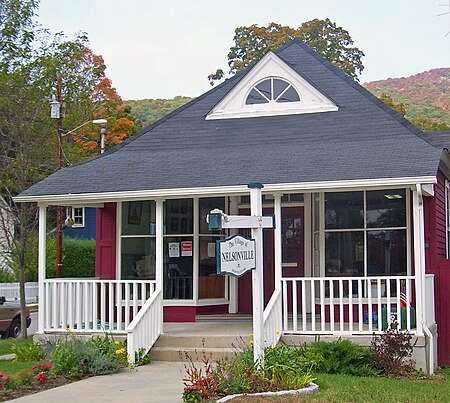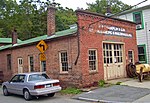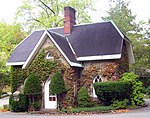Fish and Fur Club
1905 establishments in New York (state)Buildings and structures completed in 1905Buildings and structures in Putnam County, New YorkClubhouses on the National Register of Historic Places in New York (state)National Register of Historic Places in Putnam County, New York

The original Fish and Fur Club building is at Main (NY 301) and Pearl Streets in Nelsonville, New York, United States. It is now used as Nelsonville's village hall. In 1982 it was added to the National Register of Historic Places (NRHP). It is a single-story three-by-three-bay wood frame building on a stone foundation. An asphalt-shingled hipped roof is pierced in the front by a triangular dormer with a semicircular window. On the front is a poured-concrete porch with wooden posts and railings, leading to the main entrance, a recessed, panelled and glazed double door with a three-part transom. It is flanked by two wood-framed glass bay windows.
Excerpt from the Wikipedia article Fish and Fur Club (License: CC BY-SA 3.0, Authors, Images).Fish and Fur Club
Pearl Street,
Geographical coordinates (GPS) Address Nearby Places Show on map
Geographical coordinates (GPS)
| Latitude | Longitude |
|---|---|
| N 41.423611111111 ° | E -73.948611111111 ° |
Address
Pearl Street 58 1/2
10516
New York, United States
Open on Google Maps











